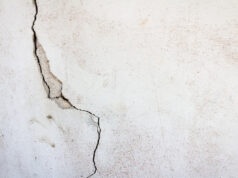
Not all micro turbines will generate enough wind power to provide for your entire house – and some will be serious overkill. See how different systems perform, and what’s likely to be the most efficient choice for you.

What is a life cycle assessment?
A life-cycle assessment (LCA) examines every aspect of a product’s life from the gathering of raw materials right up to its disposal and eventual breakdown. Even environmentally beneficial technologies will have some impact on the environment and these studies measure and quantify that impact. A thorough LCA will by necessity be as specific as possible to measure the total influence of the product, especially noting areas such as how and where components are produced and how they are transported.
To be clear: this article isn’t a lifecycle assessment. It’s a broad explanation of how an LCA works, and an explanation of why it’s worth considering the energy used in the production of a wind turbine if you’re serious about sustainability. Every turbine will use different amounts of energy and CO2 in production, generate different amounts of power, and have different energy pay back times.
What materials are used in a wind turbine?
The amounts will vary depending on the exact measurements and materials used, but steel is the most common material used to create not just the turbines themselves, but also the inverters, the generators and the towers or poles to keep the turbines where they needs to be. Copper for the wiring is common, as well as various plastics and rubbers to create the housings.
What does a wind turbine’s lifecycle look like?
Since most of the components are steel, a wind turbine’s life starts out in a mine as iron ore, which is processed into steel, then shaped to create the individual parts. The rotor and generator are assembled and shipped along with the blades to locations around the world. From there, they are purchased by consumers and installed where they begin to pay back the energy used to create them.
Once a turbine has reached the end of its useful life, it can be recycled for parts as scrap metal and reused. The rated usable life for a domestic micro turbine can range from anywhere between 15 and 25 years or beyond. Other components such as any concrete used in the tower can also be crushed and reused though this is more commonly disposed of.
Different turbines will require different levels of maintenance too, and it’s worth getting some real-world advice on just how much of this is likely to be required. If a particular design will need a new generator after 10 years, then this will add to the amount of energy that needs to be factored in.
Where is most of the energy used?
The majority of the energy used is, as is commonly found in these studies, the transformation of the raw materials into the finished product. The electricity used in the refinement of the steel and its further processing into the components contributes the most amount of energy to the end result.
What’s the energy payback period?
The energy payback period for a wind turbine is the amount of time required for the wind turbine to produce the amount of energy that went into its production and installation. Different conditions affect this number significantly, including:
- How much material was used
- How the material was mined
- How the turbine was manufactured
- How much electrical power the turbine is capable of producing
- How much power the turbine actually produces on average
- How much maintenance is required
As you’d expect, different studies and models return significantly different energy payback times for similarly specced systems. In many cases where domestic micro-turbines are expected to generate relatively consistently, payback times are signficantly less than two years – and in some cases are even a matter of months.
If you’re on the market for a wind turbine, consult your retailer for more information on energy payback times and lifecycle assessments.





